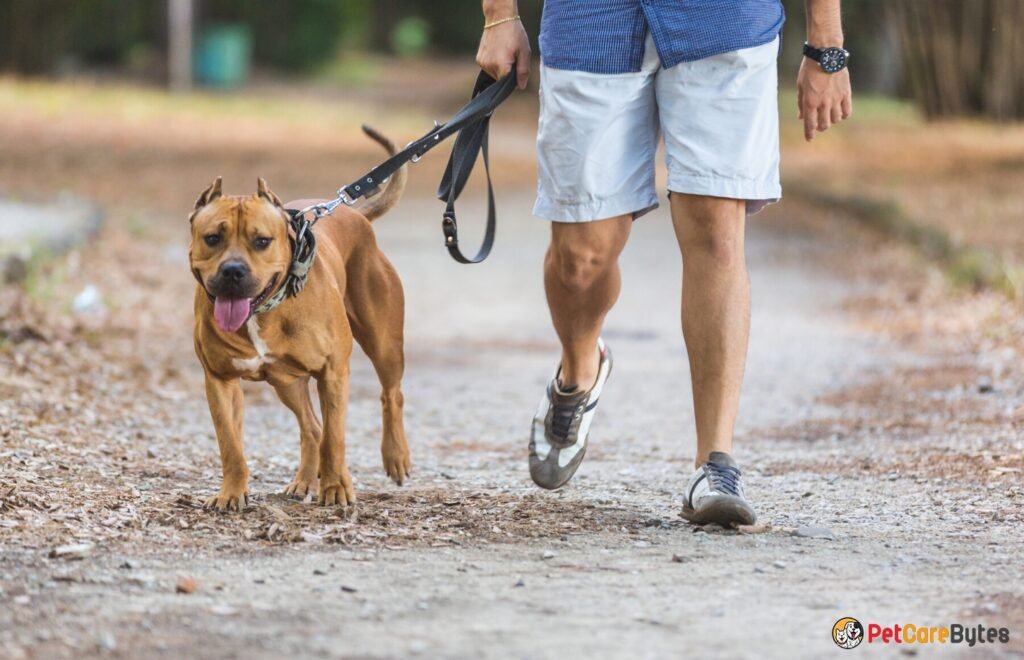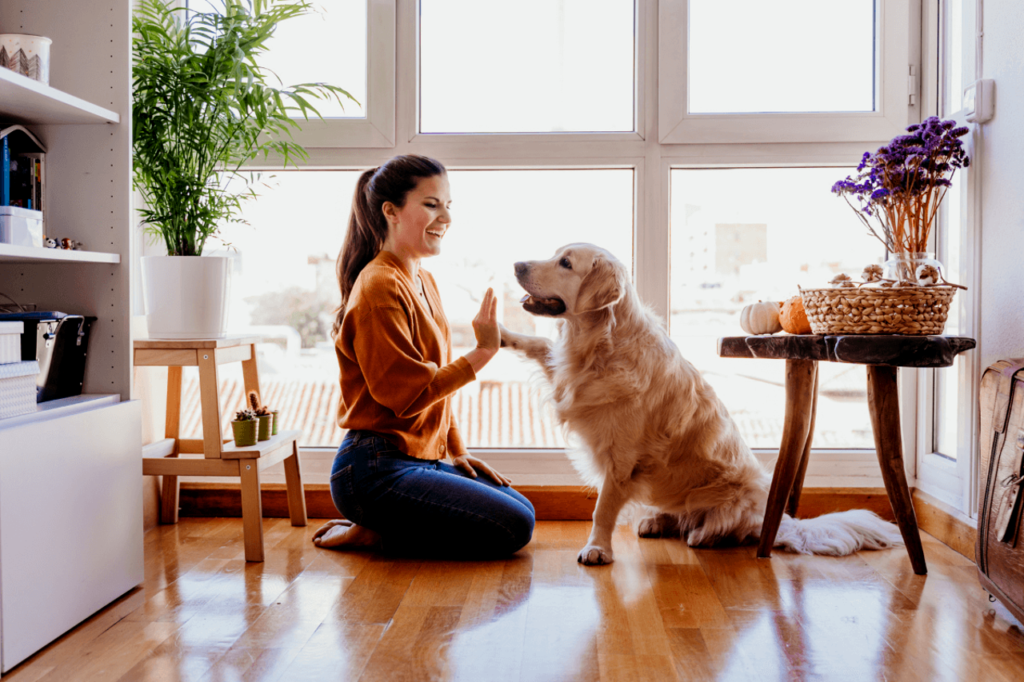
Benefits of Exercise for Senior Pets
Our pets age gracefully, becoming beloved companions with each passing year. As they enter their senior years, it becomes even more crucial to cater to their evolving needs. One aspect often underestimated is the importance of regular exercise for senior pets. In this article, we’ll explore the multitude of benefits that come with keeping our aging furry friends active, both physically and mentally.
Read More: Winter Pet Care for Senior Animals
Physical Health Benefits

Improved Joint Health
Just like humans, senior pets can experience joint issues as they age. Engaging them in regular, low-impact exercises, such as gentle walks or swimming, can alleviate stiffness, enhance flexibility, and promote overall joint health.
Weight Management
Maintaining a healthy weight is paramount for senior pets. Regular exercise serves as a natural solution to weight management, reducing the risk of obesity-related health issues that can compromise their quality of life.
Enhanced Cardiovascular Health
Cardiovascular health is crucial for pets, and exercise plays a pivotal role in maintaining it. Activities that stimulate the heart and improve blood circulation contribute to a healthier and more robust cardiovascular system.
Mental Health Benefits
Cognitive Stimulation
Senior pets, like their younger counterparts, benefit from mental stimulation. Engaging in activities that challenge their minds, such as puzzle toys or interactive games, helps keep cognitive functions sharp, delaying the onset of cognitive dysfunction syndrome.
Reduced Anxiety and Stress
Changes in routine, environment, or health can induce anxiety in senior pets. Regular exercise acts as a natural stress reliever, promoting a calm and content demeanor by releasing endorphins.
Prevention of Behavioral Issues
Boredom and lack of stimulation can lead to undesirable behaviors in senior pets. Regular exercise serves as an outlet for pent-up energy, reducing the likelihood of behavioral problems and promoting a harmonious living environment.
Social Interaction and Bonding
Exercise as a Bonding Activity
Beyond the physical benefits, exercise provides an excellent opportunity for bonding. Whether it’s a leisurely stroll or a game of fetch, shared experiences during exercise strengthen the emotional connection between pet and owner.
Socialization Benefits for Senior Pets
Regular walks and outings not only provide physical exercise but also offer opportunities for socialization. Meeting other animals and humans during these activities is crucial for maintaining a positive and well-adjusted temperament in senior pets.
Tailoring Exercises to Senior Pets
Understanding Limitations
Recognizing and respecting the physical limitations of senior pets is essential. Tailoring exercise routines to accommodate their abilities ensures a safe and enjoyable experience.
Choosing Appropriate Activities
Not all exercises are suitable for senior pets. Low-impact activities like swimming, gentle walks, and modified play can provide the necessary physical activity without causing strain on their aging bodies.
Regular Veterinary Check-ups
Before embarking on a new exercise regimen, consulting with your veterinarian is crucial. They can assess your pet’s health and provide guidance on suitable activities based on their individual needs, ensuring a holistic approach to senior pet care.
Incorporating Fun and Engaging Activities
Interactive Toys and Games
Make exercise enjoyable for senior pets by incorporating interactive toys and games. These activities not only stimulate the body but also engage their minds, providing a holistic approach to well-being.
Safe Outdoor Adventures
Exploring the outdoors is enriching for senior pets, but safety is paramount. Ensure the environment is secure, and consider using harnesses or strollers for mobility-impaired seniors to ensure a positive and safe experience.
Low-Impact Exercises for Seniors
Choosing exercises that are easy on the joints, such as gentle stretching or modified versions of traditional games, ensures a comfortable and pain-free experience for senior pets.
Importance of Consistency

Establishing a Routine
Consistency is key when it comes to senior pet exercise. Establishing a routine provides structure and predictability, contributing to a sense of security for your furry friend.
Gradual Progression in Activity Levels
As your pet ages, adjusting the intensity and duration of exercises is crucial. Gradual progression helps prevent injuries and allows your senior pet to adapt to changing physical capabilities.
Monitoring Changes and Adjusting Accordingly
Vigilance is essential in monitoring your senior pet’s response to exercise. If you notice any signs of discomfort or changes in behavior, adjusting the exercise routine promptly is crucial. Regular veterinary check-ups aid in this ongoing assessment.
Common Concerns and How to Address Them
Overcoming Resistance to Exercise
Some senior pets may resist exercise initially due to pain or discomfort. Starting slow, using positive reinforcement, and gradually increasing activity levels can help overcome resistance.
Dealing with Health Conditions
For senior pets with pre-existing health conditions, working closely with your veterinarian is essential. They can help tailor an exercise plan that accommodates specific needs and limitations, ensuring a safe and beneficial experience.
Seeking Professional Advice
When in doubt, seek professional advice. Veterinarians and animal behaviorists can provide personalized guidance, ensuring the well-being of your senior pet is prioritized.
Case Studies
Success Stories of Senior Pets Benefiting from Exercise
Real-life examples highlight the transformative power of regular exercise for senior pets. These case studies showcase improvements in mobility, mental acuity, and overall happiness, providing inspiration for pet owners.
Real-Life Examples Illustrating Positive Outcomes
Explore how senior pets with various health conditions thrived after incorporating tailored exercise routines into their daily lives. These examples underscore the positive impact of proactive care.
Nutrition’s Role in Senior Pet Exercise
Supporting Exercise with a Balanced Diet
Nutrition plays a crucial role in the overall health of senior pets. Ensuring their diet supports their exercise regimen provides the necessary nutrients for optimal well-being.
Special Dietary Considerations for Senior Pets
Consulting with your veterinarian is vital to determine if any dietary adjustments are needed to complement your senior pet’s exercise routine. Specialized diets may be beneficial for certain health conditions.
Creating a Senior-Friendly Environment
Safe and Comfortable Spaces for Exercise
Designate areas in your home that are safe and comfortable for exercise. Providing non-slip surfaces and supportive bedding for resting after physical activity contributes to a positive exercise experience.
Adequate Resting Areas
Senior pets may require more rest between activities. Ensuring there are cozy resting spots where they can recharge and relax after their exercise sessions is essential for their overall well-being.
Testimonials from Pet Owners
Personal Experiences with Exercising Senior Pets
Read heartwarming testimonials from pet owners who have witnessed the positive impact of regular exercise on their senior pets’ lives. These narratives provide firsthand accounts of the joys and benefits of keeping senior pets active.
Testimonials Highlighting Improvements in Health and Happiness
Discover how exercise has contributed to improved health, increased vitality, and overall happiness in senior pets. These testimonials serve as a testament to the transformative power of a well-structured exercise routine.
Monitoring and Adjusting Exercise Routines
Adapting Routines as Pets Age
As your pet continues to age, be prepared to adapt exercise routines accordingly. Regular reassessment of their needs and making adjustments ensures their continued well-being.
Recognizing Signs of Overexertion or Fatigue
Pay close attention to signs of fatigue or overexertion during exercise. Adjusting the intensity of exercises promptly and consulting your veterinarian if needed ensures a safe and enjoyable experience for your senior pet.
The Role of Veterinarians in Senior Pet Care

Collaborating with Veterinary Professionals
Collaborating with your veterinarian is key to creating a holistic approach to senior pet care. Regular check-ups and open communication ensure your pet’s health is prioritized throughout their golden years.
Regular Health Check-ups and Advice
Schedule regular health check-ups to address any emerging concerns promptly. Your veterinarian can offer advice on adjustments to your senior pet’s exercise routine based on their health status, contributing to proactive and preventive care.
Conclusion on Exercise for Senior Pets
The benefits of exercise for senior pets are profound, positively impacting both their physical and mental well-being. By understanding their unique needs, tailoring activities, and maintaining consistency, you can contribute to a happier and healthier life for your aging furry friend.
Read More: Top 5 Cat Toys for Exercise and Fitness
Frequently Asked Questions (FAQs)
- How much exercise do senior pets need? The amount of exercise varies based on individual health and breed. Consult your veterinarian for personalized recommendations.
- Can senior pets start new exercise routines? Yes, with caution. Start slow and monitor their response. If there are any concerns, seek advice from your veterinarian.
- Are there age-related limitations to exercise? Senior pets may have physical limitations. Tailor exercises to accommodate their abilities and consult your vet for guidance.
- What role does diet play in senior pet exercise? Nutrition is crucial. Consult your vet to ensure your senior pet’s diet complements their exercise routine.
- How do I motivate a reluctant senior pet to exercise? Use positive reinforcement, start with enjoyable activities, and be patient. If resistance persists, consult your veterinarian for guidance.







